Quick Answer:
- YouTubers have multiple channels to target different audience demographics without compromising the integrity of their main channel.
- Multiple channels enable various revenue streams and cater to a range of advertiser preferences.
- While effective, a multi-channel strategy isn’t a silver bullet; it demands careful planning, resource allocation, and audience understanding to succeed.
We’ve all seen it: You’re scrolling through YouTube, and you stumble upon a creator you enjoy, only to find out they have not one but multiple channels. Why do this? Aren’t they just dividing their own audience?
It’s easy to think that. But as you’ll soon learn, that’s not the case at all. If you’re confused, don’t worry. We’ll get into the real reasons YouTubers invest in having multiple channels and why it may not be as counterintuitive as it initially appears.
A Case Study in Multi-Channel Strategy
If you’re looking for a masterclass on why having multiple YouTube channels can be a game-changer, then look no further than MrBeast. The man isn’t just a YouTube star; he’s a fully-fledged digital media tycoon, expertly leveraging multiple channels for various purposes. Let’s dissect how he does it.
MrBeast
First things first, the main MrBeast channel is the cornerstone of the empire. This channel is designed to attract mass viewership with its high-impact, viral content.
The catch? It doesn’t cater to every niche audience. That’s where the subsidiary channels come in, each fulfilling a specific audience need, effectively casting a wider net over the YouTube seas.
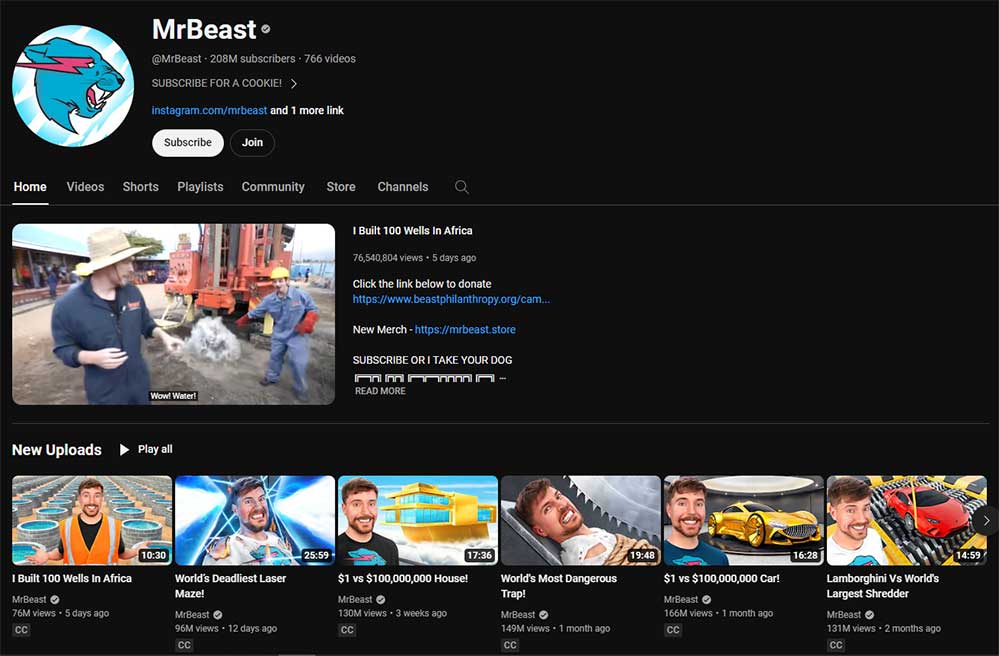
Beast Reacts
Creating a reaction channel like Beast Reacts serves multiple purposes. Not only does it provide additional content that’s easier to produce, but it also targets an audience that thrives on the emotional and spontaneous.
It complements the main channel by offering a different type of engagement without the need to dilute the core brand.
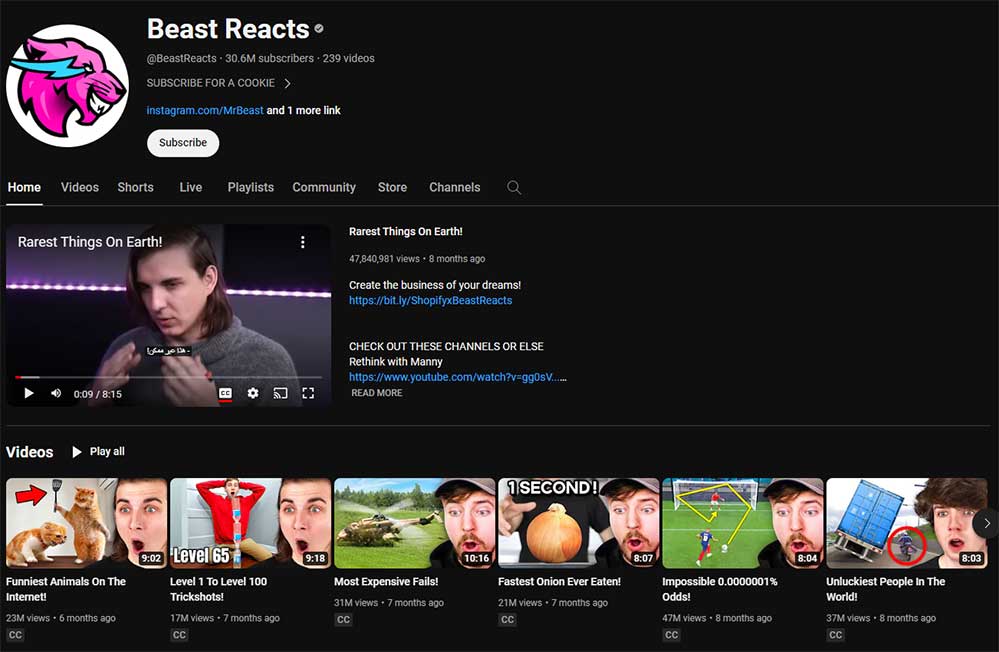
MrBeast Gaming
Gaming is a colossal market on YouTube. MrBeast Gaming allows the brand to tap into this without alienating subscribers on the main channel who signed up for philanthropy and stunts, not gameplay.
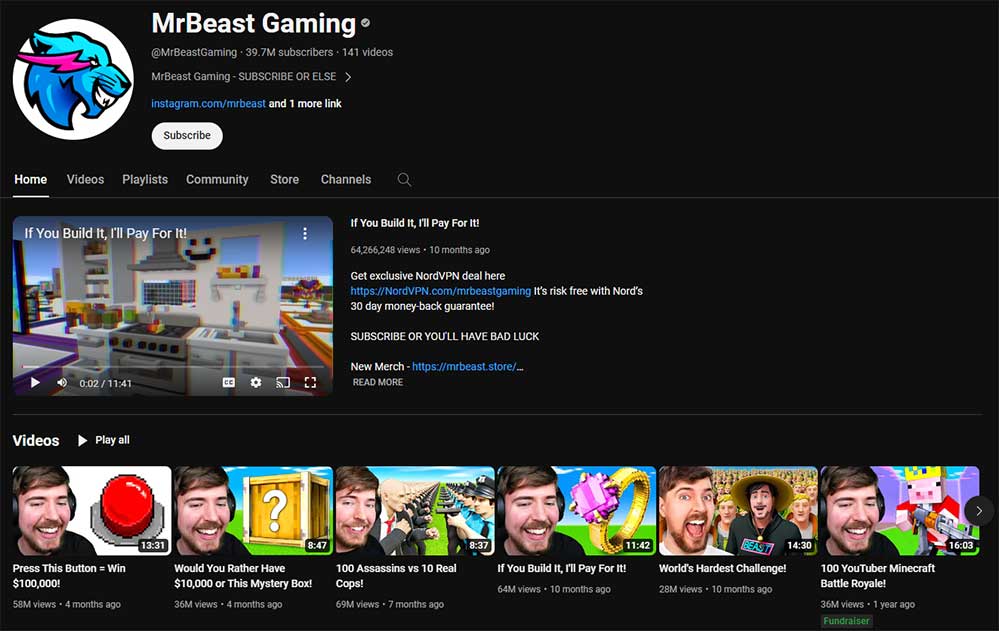
MrBeast 2
Not everyone has the luxury to sit through a 20-minute video. Enter MrBeast 2, which offers “quick hits” of entertainment. Formerly known as “MrBeast Shorts,” this channel serves the time-crunched crowd, thereby covering another viewer demographic that the main channel might not fully satisfy.
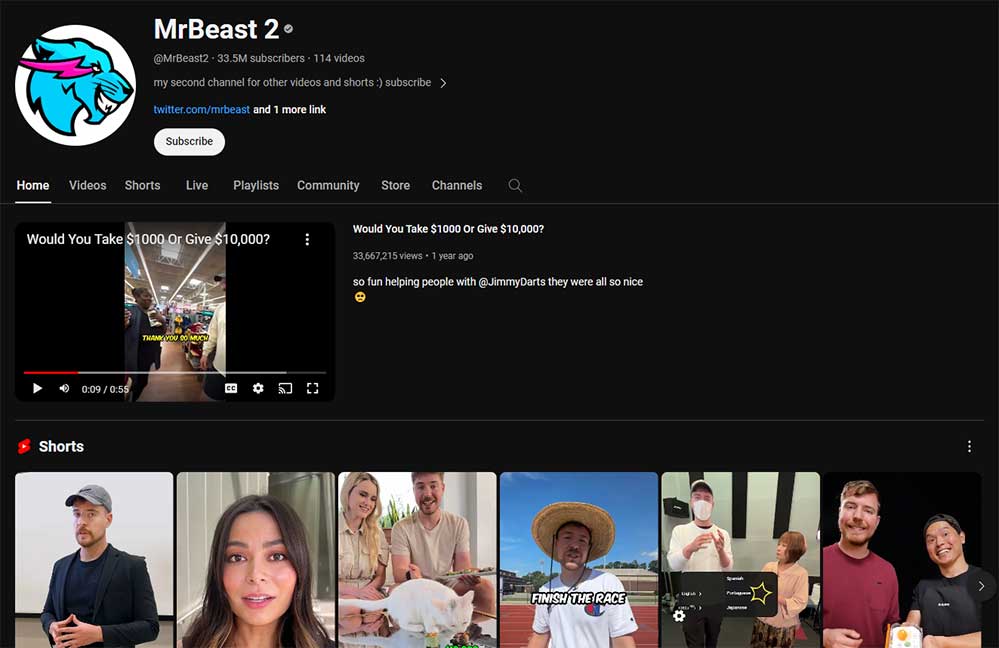
Beast Philanthropy
The Beast Philanthropy channel focuses on charitable deeds and social causes. By segregating this content, MrBeast ensures that those who are here for the philanthropy don’t get sidetracked by the spectacle on his main channel. It keeps the mission clear, and the audience focused.
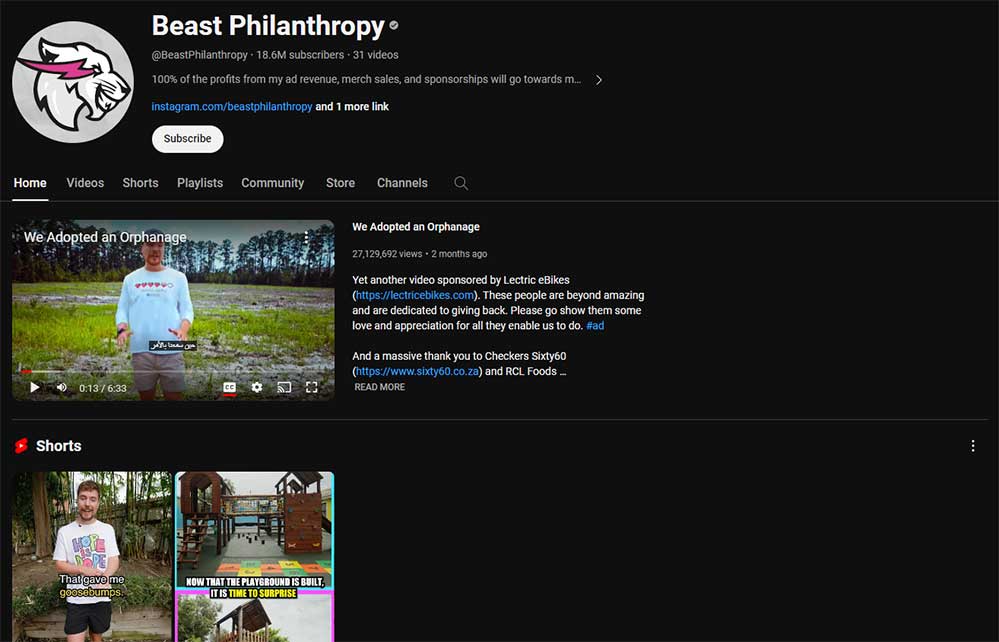
Why Multiple Channels Make Sense
Multiple channels allow MrBeast to target various audience demographics without jeopardizing the brand integrity of the main channel. Each subsidiary channel acts as its own content funnel, attracting a unique set of viewers while still feeding into the larger MrBeast brand.
Moreover, by diversifying the content landscape, MrBeast taps into multiple revenue streams.
Whether it’s through ad revenue, sponsored content, or merchandise, each channel offers its own set of financial opportunities, making the whole operation not just creatively satisfying but also economically robust.
So, if you’re a content creator mulling over whether to branch out, MrBeast’s strategy offers compelling evidence. Multiple channels can mean multiple opportunities for growth, both in audience reach and revenue. No wonder he’s the highest-paid YouTuber as of 2023.
The Pitfalls of a One-Channel Approach
If MrBeast’s success is anything to go by, the one-channel strategy is yesterday’s news. This is especially true when you have an audience as diverse and demanding as the one that MrBeast commands. To fully explain why this is the case, let’s break it all down.
Unwanted Content Clogs the Feed
Imagine this: You follow MrBeast for his jaw-dropping stunts, and suddenly, your feed is awash with, say, 30 minutes of him reacting to TikTok videos. You didn’t sign up for that, did you?
Even though Beast Reacts has its own loyal following, merging such content with the main channel risks alienating the core audience that initially gravitated toward MrBeast for his original recipe of philanthropic challenges and outrageous stunts.

Overwhelm Leads to Unsubscribing
You love MrBeast Gaming; you’re all about that Fortnite strategy and Minecraft lore. But if your feed is now drowning in posts about saving the oceans (noble, but not what you’re here for), that unsubscribe button starts looking mighty tempting.
The Domino Effect of Audience Fragmentation
Now, suppose you actually did hit that unsubscribe button. You’re probably not the only one.
This cascade of unsubscribes due to mismatched content can trigger the YouTube algorithm to de-prioritize the channel, leading to reduced visibility, even for those who do appreciate the broader range of content. The net effect? A slump in views and, potentially, revenue. This is one reason that you’ll see youtubers changing their thumbnail and titles frequently after they’ve uploaded new content.
Multiple Channels Is Specialization at Its Finest
By running multiple channels, MrBeast sidesteps all these complications. His distinct channels, like Beast Reacts, MrBeast Gaming, and Beast Philanthropy offer specialized content feeds that cater to specific audience interests.
The subscribers know what they’re getting into, and they get exactly what they signed up for – no surprises, just satisfaction.
In short, MrBeast’s multi-channel strategy operates as a well-oiled machine. Each channel serves a specific function, working in coordination with the others to deliver a well-rounded viewer experience.
This approach not only enhances the overall brand image but also ensures that various audience groups are both engaged and satisfied.
Multiplication, Not Division
Contrary to popular belief, operating multiple channels often amplifies rather than divides an audience.
Let’s say you love MrBeast’s philanthropic stunts but also get a kick out of his gaming escapades. Chances are, you’ll hit the subscribe button on both his main channel and his gaming channel. Suddenly, you’re essentially counted as two subscribers for the price of one fan.

Having an established channel is also a boon when launching new platforms. MrBeast leverages his already influential presence to boost his newer channels, like Beast Reacts or Beast Philanthropy.
It’s a strategy akin to internal marketing, where each channel promotes the other, accelerating audience growth through strategic cross-promotion.
Segmentation and Selection
MrBeast doesn’t just chuck all his videos into a single digital bucket. He cleverly categorizes them, creating distinct lanes for each content type. This kind of segmentation has several advantages, one of which is enhanced Search Engine Optimization (SEO).
For example, MrBeast Gaming is more likely to appear in search results for gaming queries, while Beast Philanthropy could show up in searches related to charitable initiatives.

Such delineation doesn’t just boost visibility; it also refines the viewer experience. Subscribers know what to expect from each channel, which makes for a more satisfying user experience. Moreover, this strategic separation improves the content creation workflow.
It’s easier to plan, produce, and post videos when you’ve clearly defined what each channel is about. The outcome? A well-organized content machine that keeps MrBeast’s diverse audience engaged and entertained.
Diversification: Embracing a Multifaceted Audience
If there’s one thing we can say about humanity, it’s that we’re an unpredictable bunch with varied tastes. One day, we’re knee-deep in DIY car repairs; the next, we’re captivated by the art of woodworking.
Multiple YouTube channels give creators like MrBeast the latitude to cater to these oscillating interests. By keeping each channel’s content aligned with a specific theme, creators can experiment with new topics without disrupting the overall brand identity.
This diversified content strategy not only broadens the audience reach but also adds layers to the brand personality. Further, the flexibility to venture into different content types attracts a more diverse set of sponsors.
The Many Paths to Monetization
Multiple channels aren’t just a boon for viewers; they’re a financial catalyst for creators. Let’s break this down: Imagine you’re a brand focused on eco-friendly products.
You’re more likely to put your dollars behind MrBeast’s philanthropic channel than, say, his gaming adventures. Different channels inherently appeal to different sets of advertisers, enabling more targeted sponsorships.
For content creators, this means an opportunity to diversify income streams. One channel might be raking in revenue from AdSense, while another is a hotbed for sponsored content. Yet another could be thriving on merch sales.
This multi-pronged approach to monetization makes the financial portfolio as diverse as the content itself, offering a safety net against the unpredictable tides of online revenue generation.
Are Multiple Channels for Every YouTuber?
Having multiple channels is not a guaranteed win for every creator out there. There are instances where a multi-channel strategy has backfired.
For example, some audiences find themselves at a crossroads, unable to decide which channel to follow. The result? They throw their hands up in frustration and hit “unsubscribe” on both.
Moreover, maintaining numerous channels can be resource-intensive. The demand for varied, high-quality content across platforms may lead to a strain on time and production resources.

There’s also the challenge of consistency – keeping multiple channels updated requires a well-oiled production pipeline and a dependable team.
And finally, the effectiveness of a multi-channel approach often hinges on several variables, such as the target audience’s preferences, the diversity of the content, and even the creator’s ability to manage multiple projects simultaneously.
It’s not a one-size-fits-all strategy but rather a tailored approach that can either skyrocket a brand or serve as a cautionary tale.
Final Thoughts
Having multiple channels has proven to be a savvy strategy for some, especially those with a diverse range of content and an equally varied audience.
As seen with the MrBeast example, it allows for targeting different demographics without diluting the core brand message.
However, it’s not without its challenges, from resource allocation to brand consistency.
The bottom line? Multiple channels can bolster revenue, increase visibility, and offer a finely-tuned viewer experience, but they require strategic planning and robust execution. They can even safeguard your content if you happen to have your YouTube account deleted for seemingly no reason.
Meet Ry, “TechGuru,” a 36-year-old technology enthusiast with a deep passion for tech innovations. With extensive experience, he specializes in gaming hardware and software, and has expertise in gadgets, custom PCs, and audio.
Besides writing about tech and reviewing new products, he enjoys traveling, hiking, and photography. Committed to keeping up with the latest industry trends, he aims to guide readers in making informed tech decisions.

